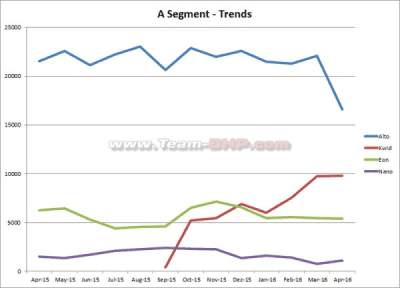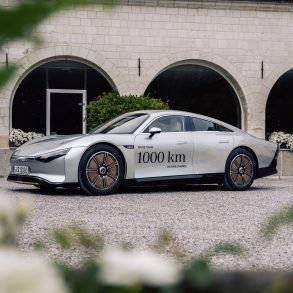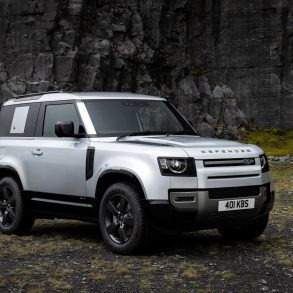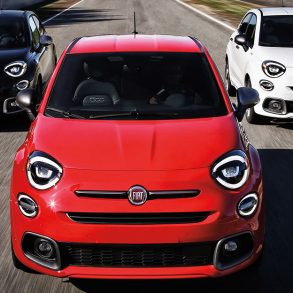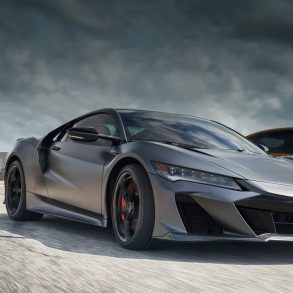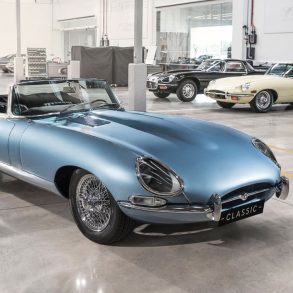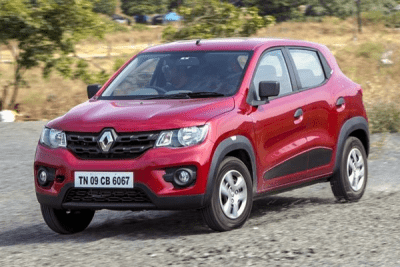 For the past 12 years, Renault has enjoyed an incredible worldwide success with its line-up of low-cost models, which are marketed under the Dacia brand in Europe and North Africa, and under the Renault brand in most other markets like Russia, South America, Arabia and India. In fact, these low-cost models currently comprise as much as 46% of worldwide sales for the combined Renault and Dacia brands. In India, the Duster had been the most successful Renault model so far, but the French carmaker has really shaken up the Indian car market when it launched the Kwid small car there last year. The Kwid is slightly larger than the European Twingo, and has a higher ride height, giving it a sort of mini-crossover look. Initially only produced in India and launched there, the Kwid has become an instant hit, with 70.000 orders in the first two months of sales, while Renault’s previous sales record in India stood at less than 45.000 sales in 2014. Production capacity was quickly upgraded to 10.000 units a month and so far Renault has sold every Kwid it could build in India, helping the French brand to a record 4th place in April, ahead of local manufacturer Tata. The model itself has stormed up the Indian sales charts as well, rising quickly to the segment 2nd place, ahead of the Hyundai Eon and unsuccessful Tata Nano, and closing in quickly on the perennial overall sales leader in India: the Maruti (Suzuki) Alto, which suffered a drop of 23% in dealer orders in April, possibly as dealers expect the Alto to suffer from competition from the Kwid in coming months.
For the past 12 years, Renault has enjoyed an incredible worldwide success with its line-up of low-cost models, which are marketed under the Dacia brand in Europe and North Africa, and under the Renault brand in most other markets like Russia, South America, Arabia and India. In fact, these low-cost models currently comprise as much as 46% of worldwide sales for the combined Renault and Dacia brands. In India, the Duster had been the most successful Renault model so far, but the French carmaker has really shaken up the Indian car market when it launched the Kwid small car there last year. The Kwid is slightly larger than the European Twingo, and has a higher ride height, giving it a sort of mini-crossover look. Initially only produced in India and launched there, the Kwid has become an instant hit, with 70.000 orders in the first two months of sales, while Renault’s previous sales record in India stood at less than 45.000 sales in 2014. Production capacity was quickly upgraded to 10.000 units a month and so far Renault has sold every Kwid it could build in India, helping the French brand to a record 4th place in April, ahead of local manufacturer Tata. The model itself has stormed up the Indian sales charts as well, rising quickly to the segment 2nd place, ahead of the Hyundai Eon and unsuccessful Tata Nano, and closing in quickly on the perennial overall sales leader in India: the Maruti (Suzuki) Alto, which suffered a drop of 23% in dealer orders in April, possibly as dealers expect the Alto to suffer from competition from the Kwid in coming months.
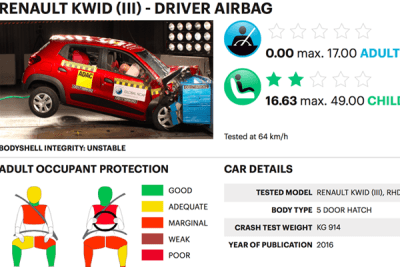 Many of our readers, and myself included, had been hoping for a European debut of the Kwid under the low-cost Dacia brand. It would be a welcome addition to the Dacia line-up, below the Sandero hatchback. The Kwid starts at € 3.500,- in India, while the Sandero is sold for just under € 7.000,- in Germany. However, those hopes have been literally shattered when Global NCAP released its crash test results for a number of Indian vehicles yesterday. All three versions of the Kwid tested scored 0 points (yes, that’s zero points) in the crash test, even the upgraded version with an optional airbag (pictured). The original version’s structure was entirely collapsed, causing Renault to make structural reinforcements to the model and have it retested. Such a dramatic result makes the business case for the model in Europe very difficult, as previous attempts of Chinese manufacturers like Landwind and Brilliance have proven. The negative publicity from a subpar safety rating will shatter the image of the model and may even hurt the brand, something Renault and Dacia are surely unwilling to do.
Many of our readers, and myself included, had been hoping for a European debut of the Kwid under the low-cost Dacia brand. It would be a welcome addition to the Dacia line-up, below the Sandero hatchback. The Kwid starts at € 3.500,- in India, while the Sandero is sold for just under € 7.000,- in Germany. However, those hopes have been literally shattered when Global NCAP released its crash test results for a number of Indian vehicles yesterday. All three versions of the Kwid tested scored 0 points (yes, that’s zero points) in the crash test, even the upgraded version with an optional airbag (pictured). The original version’s structure was entirely collapsed, causing Renault to make structural reinforcements to the model and have it retested. Such a dramatic result makes the business case for the model in Europe very difficult, as previous attempts of Chinese manufacturers like Landwind and Brilliance have proven. The negative publicity from a subpar safety rating will shatter the image of the model and may even hurt the brand, something Renault and Dacia are surely unwilling to do.
Renault has replied to the results by claiming the Kwid complies to all current Indian safety standards, but that they’ll make continued reinforcements to the body structure to further improve the safety of the model. In October of 2017 front and side impact crash tests will become mandatory for cars sold in India and Renault promises to improve the structural integrity of the Kwid as soon as possible and have it retested by Global NCAP. Would that make it a safe enough car to sell in Europe? Well, let’s put it into perspective: all other Indian cars tested last week received a 0-star rating, including the Mahindra Scorpio SUV (no airbags), the Maruti Suzuki Eeco minivan (no airbags), the Hyundai Eon minicar (no airbags) and the Suzuki Maruti Celerio (no airbags). All were criticized for having an unstable bodyshell integrity and the lack of airbags, which are not yet mandatory in India. However, 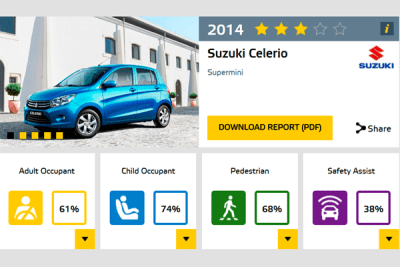 Suzuki sells a version of the Celerio in Europe, upgraded with safety features including two front airbags, two side airbags and Electronic Stability Control. This version scored 3 stars in the EuroNCAP crash test in 2014. Although that’s still the lowest figure of the segment besides the 2-star score of the Lancia Ypsilon, it’s not as dramatic that Suzuki has contemplated removing the model from the European car market. In fact, of the almost 4 million cars sold in Q1 of 2016 in Europe, 2,4% (over 90.000 vehicles) had a 3-star rating, while another 0,5% had a 2-star rating (the Ypsilon and the already discontinued Jeep Compass). In comparison: 73,5% had a 5-star rating. Also, Ford has been contemplating for a while to export the Brazilian market Ford Ka to Europe as a budget subcompact car for the price of a minicar, but is hesitating because the model is expected to score just a 2-star rating from EuroNCAP, which would severely limit the sales potential for the model in Europe.
Suzuki sells a version of the Celerio in Europe, upgraded with safety features including two front airbags, two side airbags and Electronic Stability Control. This version scored 3 stars in the EuroNCAP crash test in 2014. Although that’s still the lowest figure of the segment besides the 2-star score of the Lancia Ypsilon, it’s not as dramatic that Suzuki has contemplated removing the model from the European car market. In fact, of the almost 4 million cars sold in Q1 of 2016 in Europe, 2,4% (over 90.000 vehicles) had a 3-star rating, while another 0,5% had a 2-star rating (the Ypsilon and the already discontinued Jeep Compass). In comparison: 73,5% had a 5-star rating. Also, Ford has been contemplating for a while to export the Brazilian market Ford Ka to Europe as a budget subcompact car for the price of a minicar, but is hesitating because the model is expected to score just a 2-star rating from EuroNCAP, which would severely limit the sales potential for the model in Europe.
So if Renault can improve the structural integrity of the Kwid and equip it with mandatory and additional safety systems like airbags and ESC, it may be able to score a 3-star rating like the Celerio, but that would also increase the cost price of the model. And if this leads to a base price that is too close to that of the Sandero, the Kwid still is unlikely to make it to Europe. On one hand that would be a shame, because it’s arguably a better looking car than the Twingo, which I find too tall and too narrow in its proportions, due being co-developed with Smart. But on the other hand for European car buyers, safety apparently has a higher priority than for those in India, and one could argue whether a tier-1 manufacturer like Renault should be willing to sell car with a 3-star safety rating in Europe.

